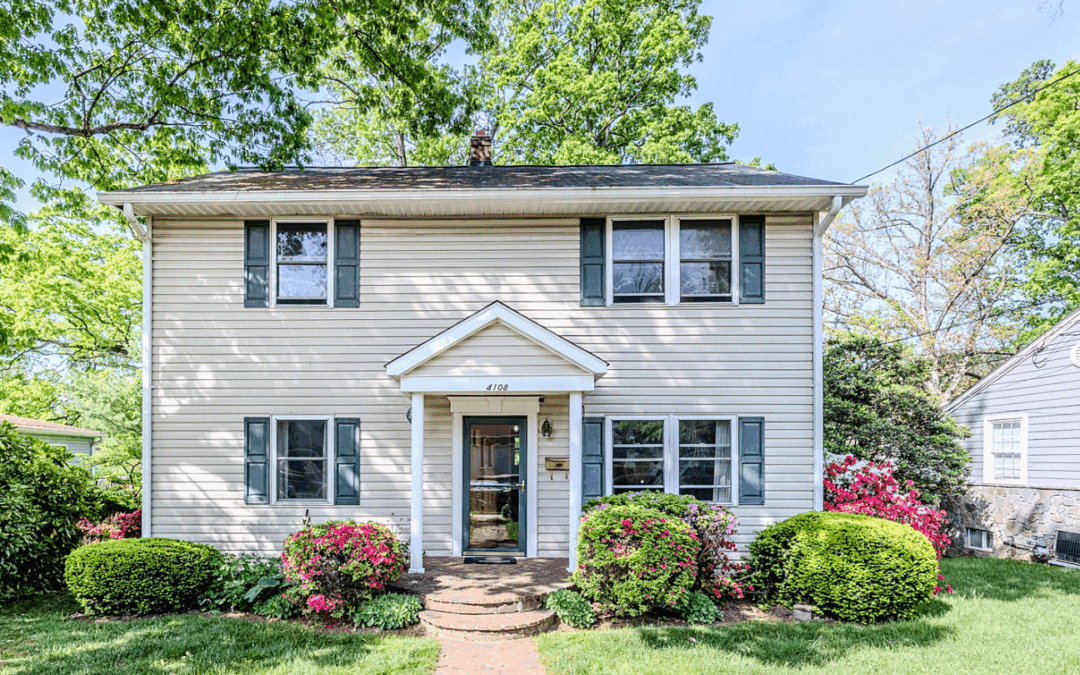What Components Make a Strong Offer?
If you’re searching for a new home and curious about what components make a strong offer, you’re in the right place.
In today’s seller’s market, low inventory and increasing interest rates keep buyers in bidding wars & sellers ultimately in control. To cut through the noise, you need to make sure you do everything you can to make your offer stand out. Below we’ve compiled a list on how you can do exactly that.
1. Making Your Offer as Clean as Possible
Waiving All Contingencies
Contingencies are put in place to protect the buyer when purchasing a home.
Some of the most common contingencies include including the sale of another property, appraisal, inspection, loan, and any other financial contingencies. Let’s break down what each of those mean:
-
- Appraisal contingency: appraisal contingencies allow the buyer to rescind their offer if the value of the home, as indicated by the appraiser, is lower than the agreed upon purchase price.
- Inspection contingency: inspection contingencies, one of the most important contingencies for protecting the buyer, allow the buyer to back out if the inspection report reveals the home is in poor condition or require major repairs.
- Financing contingency: a financing contingency protects the buyer in the event they aren’t able to secure the funds needed to purchase the home.
- Home sale contingency: a home sale contingency is pretty straight-forward; it allows the buyer to back out if their current home doesn’t sell in time for the deal to move forward.
- Title contingency: a title contingency protects the buyer in the event that the seller is not able to transfer the title of the home to the buyer without any liens or encumbrances; encumbrances are anything that prevent the buyer from making changes to the home or land.
By waiving any and all contingencies, you make your offer that much more competitive and enticing to the seller. While this does open you up to significant risk, it will definitely allow you to stand out amongst the crowded marketplace.
Not Including Any Seller Concessions
Seller concessions are closing costs that the seller has agreed to pay.
In a buyer’s market, seller concessions are pretty common. However, in a seller’s market, where the current homeowner wields the power, you’d be better off waiving any and all seller concessions.
Avoiding Asking for Personal Property
Asking for personal property as part of your offer could be the only thing separating your application from another, so if you really love that chandelier, consider leaving it out of the offer and purchasing one of your own!
2. Offering Above Asking
Coming in above asking price is one of the better known components of a strong offer. In a seller’s market, there’s no room for low balling; if you want to avoid a multiple bid situation, you’ll likely need to come in above the asking price to get the seller’s attention.
While this is true, offering above the asking doesn’t necessarily mean you have to offer an amount excessively over the listing price; you may only need to offer $5,000-$10,000 more to be seriously considered.
As such, coming in above the asking price has little effect on the buyer, with monthly mortgage payments only increasing marginally, while having a huge impact on the seller.
3. Putting Down a Strong Earnest Money Deposit
An earnest money deposit (EMD), also known as a good faith deposit, is money put down initially by a prospective buyer to show the seller how serious they are about buying the home in question. When your EMD is submitted, the real estate broker will more than likely put the funds into an escrow account to later be used as part of a down payment and/or in closing costs.
The more money you put down, the more you will stand out; on average, you can expect to put down around 1%-3% of the total purchase price. However, be careful putting down a large EMD if you aren’t serious about buying the home, the seller has the right to hold onto your EMD if the sale eventually falls through.
4. Putting Down a Larger Down Payment in Your Loan Program
Although the two are often confused, earnest money deposits and down payments are two separate payments, unfortunately.
While an EMD indicates intent to the seller, a down payment indicates to the mortgage lender how serious and reliable you are as a borrower (even though your EMD may later be put toward your down payment if desired).
For a mortgage down payment, you can expect to put down anywhere from 3%-20%, but be ready to come in on the higher end, depending on factors like your credit score and length of credit amongst other considerations.
5. Adding an Escalation Clause
An escalation clause states that you will outbid any other offer that comes in during negotiations up to a maximum amount.
When escalation clauses come into play, the seller is left with a few options. They can either accept the escalation clause, reject the clause and issue a counter offer to speed things along, or outright reject the escalation clause while offering no counter offer, opting to raise the listing price instead.
Escalation clauses can be tricky, so be sure you consult your attorney before having them bake this into your offer.
6. Paying With Cash
Given you’re able to, paying with cash can really set your offer apart, especially in a competitive seller’s market.
Not only does an all cash offer make you more appealing as a prospective buyer, it also allows you to avoid any interest or extra fees that come along with taking out a mortgage.
7. Getting Loan Pre-Approval
Loan pre-approval is an official approval by a lender stating you are cleared to borrow up to a certain amount.
In a competitive seller’s market, sometimes multiple offers come in within a matter of hours, so not having pre-approval can really hurt you; sometimes, sellers won’t even consider an offer without pre-approval from a lender.
If you aren’t paying in cash, consider getting pre-approved on your loan before beginning the process.
8. Being Flexible With the Closing Date
You may not believe it, but being flexible with the closing date is a huge play when it comes to making an offer on a home.
The current homeowner might not be able to move out right away for a number of reasons, so if you aren’t tied to a certain date, operating within the seller’s timeline can prove to be extremely advantageous in a multiple-bid situation!
9. Offering One Month of Free Occupancy
When you purchase a home with a mortgage, your first payment isn’t due until one month after closing.
Again, if you aren’t hard-pressed to move in right away, allowing the current homeowners to occupy the property during this time, rent-free will undoubtedly make your offer stand out.
If you opt to offer one month of free occupancy, make sure you discuss all the details beforehand and get everything in writing. The last thing you want is to be cohabitating with the previous homeowners!
10. Making Sure Your Offer is Complete
This comes down to making sure you cross your T’s and dot your I’s.
In a competitive seller’s market, there is no room for errors. As such, make sure you pour over everything with a fine-tooth comb, leaving nothing unturned.
Bottom Line: Do Everything You Can to Make Your Offer Stand Out
In order to truly make your offer stand out in today’s competitive seller’s market, you may need to employ one or many of the above-mentioned components of a strong offer.
Need some help?
If you’re looking to buy or sell in DC, Maryland, or Virginia, we have a plethora of experienced agents ready to go to bat for you. Simply fill out the form below, and we’ll get back to you asap!




